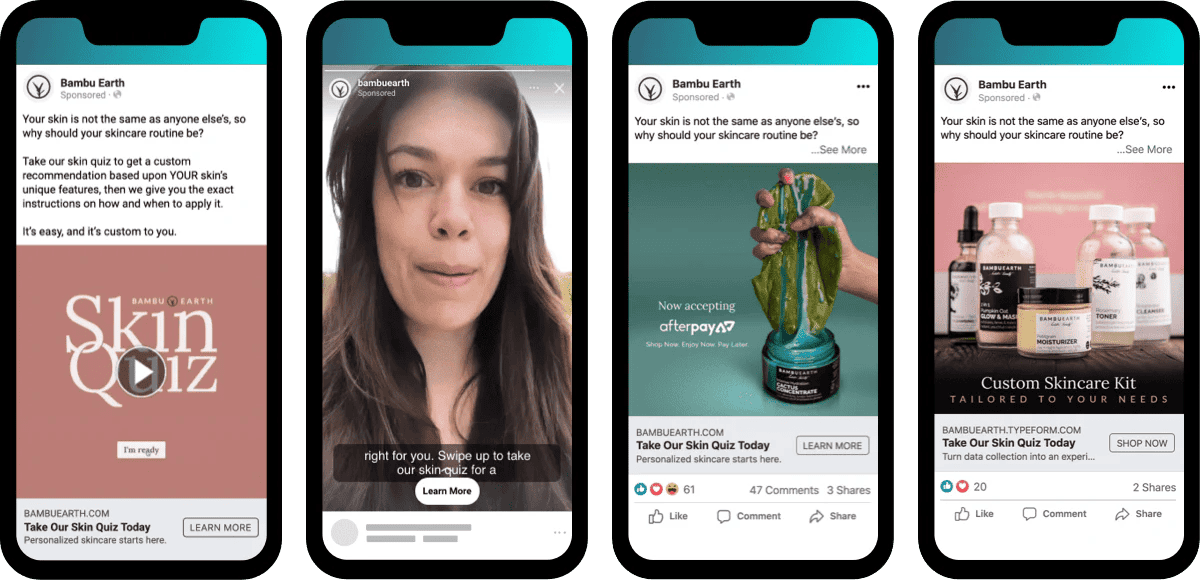Social media isn’t just where people scroll. It’s where they shop, discover brands, and make buying decisions.
For e-commerce businesses, it’s like striking gold—if you know how to dig in the right spots. A solid strategy can transform casual scrollers into loyal, paying customers. But let’s be real, it takes more than posting pretty pictures to get there. You need to know which platforms deserve your attention, how to truly connect with your audience, and what tools can give you an edge.
In this blog, I’ll explain the essentials of social media marketing to help your e-commerce brand stand out and drive real results.
Developing a strong social media marketing strategy
A well-crafted social media marketing strategy not only enhances brand visibility—it also drives customer engagement and generates demand. It involves three critical aspects:
Clear goals for your e-commerce social media marketing
Here’s the truth: Without clear goals, you’re just throwing spaghetti at the wall and hoping something will stick. It’s a waste of time, energy, and resources. So, start by getting specific about what you want to achieve.
Do you want to increase brand awareness, drive traffic to your site, generate leads, or boost sales? Let’s say you’re focusing on brand awareness. Your key metrics might include follower growth, reach, and impressions. On the other hand, if sales are the goal, you’ll want to track clicks and conversions.
Whatever your goals, make sure they align with your overall business objectives. And don’t just set vague targets, go SMART: Specific, Measurable, Achievable, Relevant, and Time-bound. This way, you’re not just “posting for the sake of posting” but actually moving the needle for your business.

But remember, a strong marketing strategy isn’t just about captivating posts—it’s also about back-end efficiency. Internal processes like effective purchase order management are critical to ensuring that when your social media efforts drive demand, your fulfillment process can keep pace. By staying on top of supplier relationships, stock levels, and order timelines, you’ll maintain a reputation for quick deliveries and reliable service. This seamless integration of marketing and inventory operations not only keeps current customers happy but also encourages new shoppers to become loyal fans.
Content calendar to plan your posts
A content calendar helps in organizing and scheduling your posts, which ensures a steady flow of content that keeps your audience engaged.
Start by determining the optimal posting frequency for each platform. This varies depending on the platform and your audience’s behavior. For example, posting multiple times a day on X might be effective, whereas on Instagram, once daily could suffice.
Next, plan the types of content you’ll share. A diverse content mix—comprising promotional posts, educational content, user-generated content (UGC), and interactive posts like polls or questions—can cater to different segments of your audience and keep them engaged.
Last, don’t forget to incorporate important dates, holidays, and industry events into your calendar to leverage timely opportunities for engagement. Utilizing tools like Adobe Express’s content scheduler can streamline this process, allowing you to plan and automate social media posts across multiple platforms, thereby maintaining consistency and saving time.
Consistency is king when it comes to social media, and a content calendar is how you can achieve it. Think of it as your game plan—a way to organize, schedule, and streamline your posts so you’re never scrambling for ideas.
💡Bulk.ly makes it easy to create and manage your content calendar, helping you stay consistent and strategic with your online presence. Discover how to use Bulk.ly to build a great content calendar.
Strong brand voice and visual identity
Your brand voice and visuals are what make you stand out in a sea of competitors, and they help to build trust with your audience.
Your voice encompasses the tone, style, and language you use in your communications. Naturally, it should reflect your brand’s personality and resonate with your target audience. For instance, if you’re targeting young adults, use a casual and witty tone. But if you’re focused on professionals, stick to something more formal and credible.
Then there’s your visual identity—logos, colors, fonts, and imagery. Brand consistency here is key. When people see your posts, they should instantly know it’s you. A brand style guide can help keep everything aligned and make life easier for your team. You can also use AI-powered UX/UI designing tools to get suggestions to simplify creating your social media graphics and visual designs.
But don’t set it and forget it. Your brand voice and visuals should evolve with your business and market trends. Regular check-ins will keep your brand fresh and relevant, helping you stay connected with your audience.
Creating engaging content for e-commerce
Did you know that over 85% of consumers conduct online research before purchasing?
Clearly, your content isn’t just an accessory to your e-commerce strategy. High-quality visuals, compelling product descriptions, and authentic user-generated content can transform casual browsers into loyal buyers.
Here’s how you can create engaging e-commerce content for your brand:
Use high-quality product images and videos
In the online world, your visuals are your storefront. If your product images look amateurish or blurry, you’re pushing away. 75% of online shoppers rely on visuals when deciding to buy.
That’s why professional photography is worth every penny. Proper lighting, consistent backgrounds, and high-resolution images let potential buyers inspect every detail, building confidence in your product. And don’t stop at just one angle—give them options. Maybe even add 360-degree views for the full experience.
Adding 30-to-90-second videos is non-negotiable, though. Shoppers love videos, and 73% of them who view a product video will make a purchase. If you’re not using video, you’re leaving money on the table.
Write compelling product descriptions and use storytelling
If pictures grab attention, words seal the deal. But let’s make one thing clear: a generic list of features doesn’t cut it. You need product descriptions that sell. Talk benefits, not just features. Show customers how your product solves their problems or makes their lives better through storytelling.
Why storytelling? It humanizes your brand and creates an emotional connection. Think of why you created this product. What’s its backstory? What problem does it tackle? People are naturally drawn to authentic narratives, buying the feelings and experiences those products promise. Use that to your advantage to engage your audience and stand out from the competition.
And let’s not forget SEO. You should add relevant keywords to boost your product’s visibility, but keep it natural. Avoid keyword stuffing that can deter potential customers.
Leverage user-generated content and influencer marketing
Encourage UGC—like customer reviews, photos, and testimonials—by creating branded hashtags or running contests. Then, showcase it on your product pages or social media to enrich your content and foster a sense of community and engagement.

Next, focus on influencers. Partnering with influencers—particularly micro and nano-influencers who have highly engaged, niche audiences—can enhance your brand visibility and credibility. Authenticity matters here. So, choose influencers whose values align with yours and whose followers match your target audience.
Leveraging social media advertising for e-commerce
With platforms like Facebook, Instagram, TikTok, and LinkedIn offering diverse advertising formats and sophisticated targeting options, you should understand how to leverage these tools effectively.
Advertising formats

With so many formats to choose from, each offering unique ways to engage your audience, the trick is finding the one that fits your goals and showcases your brand effectively.
Here’s my take on the top options and why they’re worth your attention:
- Image and video ads: When in doubt, go visual. High-quality images and videos grab attention—simple as that. Facebook and Instagram make it easy to showcase your product, whether you’re building awareness or closing a sale. If you’re skipping video ads, you’re missing out. Viewers are more likely to engage and convert when there’s a compelling story to watch.
- Carousel ads: Why settle for one image when you can have a whole lineup? Carousel ads let you showcase multiple products or features in a swipeable format. It’s like flipping through a mini-catalog, and it’s perfect for eCommerce brands or anyone wanting to tell a fuller story.
- Story ads: These full-screen, vertical ads pop up between users’ stories on Instagram and Facebook. They’re immersive, quick, and hard to ignore. The ephemeral nature of stories means they push viewers to act fast—whether it’s swiping up for a deal or signing up for a freebie.
- Collection ads: Exclusive to mobile, collection ads are a dream for online shoppers. They pair a cover image or video with product thumbnails, leading users straight to an in-app landing page. Seamless and distraction-free, these ads make shopping effortless.
💡Key takeaway: Match the ad format to your campaign goal, whether it’s brand awareness, driving traffic, or increasing conversions.
Audience targeting options
Here’s the beauty of social media ads: you don’t have to shout into the void. You can pinpoint your audience with laser precision, and trust me, this is where the magic happens.
- Demographic targeting: Start with the basics—age, gender, income, and education. For instance, a high-end skincare brand should focus on affluent women aged 30-50. Casting the net wide isn’t a great idea here.
- Interest and behavior targeting: Social platforms know your audience’s hobbies, habits, and preferences better than their best friends do. Use this to your advantage. For example, as a sports equipment retailer, you can target users who have shown interest in fitness and outdoor activities.
- Custom audiences: Got a customer list? Use it! Upload those email addresses and retarget people who already know your brand. Whether they abandoned their cart or haven’t bought in a while, custom audiences let you re-engage with a purpose.
- Lookalike audiences: Social media networks can clone your best customers—figuratively, of course. They analyze your current audience and find people with similar traits, thereby expanding your reach to a potentially receptive audience.
💡Key takeaway: Don’t just set it and forget it. Monitor your targeting to make sure it’s working.
ROI measurement
You need clear objectives, the right tools, and a bit of math to figure out if you’re winning or wasting money when executing social media marketing campaigns. To measure return on investment (ROI), you’ll have to:
- Start with goals: What’s the plan? More clicks, sales, or sign-ups? Be specific. A goal like “boost website traffic by 20%” is way better than “get more people interested.”
- Track metrics: Click-through rates (CTR), cost per acquisition (CPA), and return on ad spend (ROAS) aren’t just buzzwords—they’re the lifeline of your campaign. Track them religiously.
- Use analytics tools: Use platform-specific analytics, such as Facebook Insights or Instagram Analytics, alongside third-party tools like Google Analytics. These tools help you track everything from the first ad click to the final conversion, giving you a clear view of your customer’s journey.
- Calculate ROI: Here’s the formula you need to determine your social media ROI:
ROI (%) = [(Net Profit – Cost) / Cost] x 100
Measuring the success of your e-commerce social media marketing
When it comes to social media marketing, success is about knowing what’s working and what isn’t. Here’s how you can refine your strategy to achieve real results:
Key metrics to track
Knowing which numbers to watch is the first step to evaluating your social media game. Focus on:
- Engagement rate: This measures how well your audience interacts with your content—likes, comments, shares, you name it. A high engagement rate is a clear signal your content hits the mark. For example, if your Instagram Reels are racking up shares, it’s a no-brainer: create more short-form videos.
- Conversion rate: This tells you how many people take the desired action, like buying something or signing up for your newsletter. A low conversion rate might mean it’s time to tweak your landing pages or rethink those CTAs.
- Customer acquisition cost (CAC): Are your social media ads costing too much per customer? If your CAC is sky-high, you’re likely missing the mark with your targeting or your creatives. Refine them to get more bang for your buck.
- ROI: This is the ultimate metric—are your campaigns profitable? For instance, if $500 spent on Instagram ads brings in $2,000 in sales, you’re on the right track. Scale up what’s working!
Using analytics tools
Data testing metrics alone won’t provide value unless you can analyze and interpret them. This is where tools like Meta Ads Manager, Google Analytics, and Sprout Social come in handy.
For example, Google Analytics can show how much traffic your website is getting from specific social media channels. Sprout Social goes a step further by offering in-depth audience insights and performance metrics.
Even platform-native tools like Instagram Insights or TikTok Analytics give you direct insights into what’s working, such as when your audience is most active or which posts are driving the most clicks.
Making data-driven decisions
Once you’ve analyzed your metrics, the next step is to act on those insights. For instance, if carousel posts on Facebook consistently generate higher engagement than single-image posts, focus more on creating carousels to drive clicks and interactions.
Refining your audience targeting is another key step. If TikTok ads perform best with users aged 18–24, double down on that platform and tailor your creative to appeal directly to this demographic. This ensures your marketing dollars are spent where they’ll have the most impact.
Timing is equally important. Analytics tools often show when your audience is most active. Schedule your social media posts during these high-traffic periods to maximize visibility and engagement.
Lastly, don’t leave success to guesswork—test and learn. A/B testing lets you compare different versions of ads or posts to see what resonates most with your audience. Use these insights to continually refine your approach and improve performance over time.
Organize and optimize your social media marketing efforts
Social media marketing is a challenging endeavor—but one you can simplify if you take the right approach. Focus on setting clear goals, building a strong brand identity and content calendar, and creating engaging content. Most importantly, leverage advertising effectively and measure your performance to drive real results.
Bulk.ly can help make this process a lot easier. The platform simplifies social media management by automating repetitive tasks like scheduling, so you can dedicate more time to crafting impactful content and connecting with your audience.
Try Bulk.ly today and see how it can streamline your strategy.

